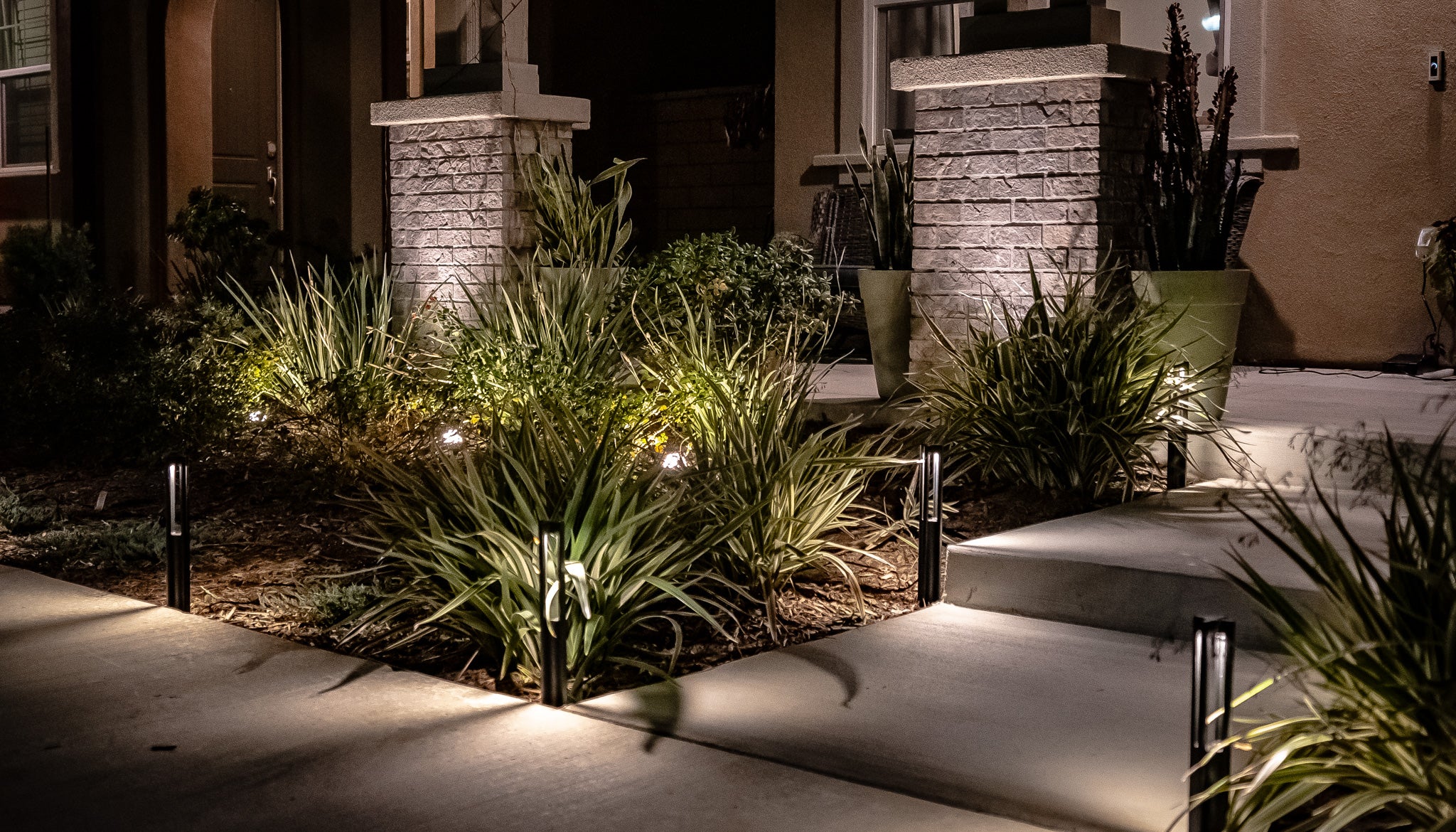The illumination of a landscape can completely revamp an outdoor area. Similar to various aspects of life, simplicity often proves to be more effective - this is true for landscape path lighting. The natural inclination may be to brighten every element, from every detail and tree to every nook and cranny. However, not only is this approach inefficient, but it can also result in an overly washed-out yard.
The charm of an outdoor space at night lies in the interplay of light and darkness, accentuating features and generating visual contrast through the forms and plants in your yard. Manipulating these elements adds intrigue and drama, and a space that is well-illuminated often exudes the most inviting atmosphere.
What exactly is Landscape Lighting?
True to its name, landscape lighting revolves around accentuating the distinctive features of your property's landscaping. It encompasses trees, shrubs, flowers, and beyond. Artistic lighting designs provide an excellent opportunity to truly showcase the unique beauty of your property's landscape.
Which elements in the landscape require illumination?
So, what should you illuminate, and what should stay in the shadows? Here are three factors to keep in mind when considering landscape lighting:
- Spot the features in your yard that you appreciate. Whether it is a pond or an impressive tree, showcasing them with light will accentuate their beauty.
- Infuse drama into areas that may go unnoticed during the day. A basic stone wall can transform into a captivating spectacle at night when bathed in the play of light and shadow.
- Consider functionality. Ensure that spaces like a deck with stairs or a winding pathway are adequately lit to facilitate safe movement around your yard and minimize the risk of accidents.
Always prioritize a welcoming and well-lit entrance. A properly lit entryway not only ensures the safe navigation of family members or guests but also contributes to a warm and inviting curb appeal. The objective of landscape lighting with LED landscape lights is to showcase the effects of the light rather than the light source itself.

How to illuminate a landscape?
Landscape lights come in as many varieties as there are places to position them. When assessing your project, it can be beneficial to take a high-powered flashlight with an adjustable beam and explore the area at night. Experiment with the light to determine what enhances the ambiance and what may not work as effectively.
Now, let's explore some effects you can achieve with landscape lighting:
- Uplighting
Uplighting stands out as a fundamental type of landscape lighting, aiming to infuse drama around taller structures or trees. Opt to illuminate the trunk of substantial trees or the undersides of the canopies, whether on larger or smaller trees, to achieve varied effects.
- Silhouetting
This effect is excellent for accentuating captivating shapes that might go unnoticed in broad daylight. Position the light source behind the object and illuminate it towards the primary viewing angle, ensuring the light source remains hidden from sight.
- Shadowing
This method is the opposite of silhouetting. Position the light source between the primary viewing angle and the object being illuminated, directing the light towards the item. This approach is effective only when there is a wall or flat surface behind the illuminated object to capture the resulting shadows. However, it can produce a softer and more atmospheric effect.
- Moon Lighting
This landscape path lighting method proves particularly impactful when dealing with larger trees in your surroundings. Position the light source high in the tree, directing it downward to bathe both the branches and the ground below in light. When applied to a tree with open branches, it produces a remarkable and striking effect.
- Grazing
If your yard is predominantly composed of hardscapes, this presents an excellent choice. Grazing entails positioning the light in proximity to a flat surface and directing it either upwards or downwards to generate captivating interplays of light and shadow. Whether grazing upwards or downwards, the goal is to leverage the texture across a level plane, making uneven or irregular patterns particularly effective. This technique can lend an enhanced aesthetic, commonly observed in the design of hotels and restaurants.
- Washing
Occasionally, a space demands additional ambient lighting. To achieve a well-lit ambiance, consider illuminating a substantial wall or hedge in an entertainment area, effectively "washing" the space with LED landscape lights. Employ a broad-beamed light situated between the primary viewing angle and the surface, ensuring an even and gentle illumination across the entire area.
Final Words
The modern standard for landscape lighting is LED, offering unbeatable cost savings and exceptional longevity. What's more - contemporary LED landscape lights come with features, such as adjustable beam spread, that you will want to make the most of. Armed with these fundamentals, you are ready to begin planning your landscape design. Just remember to consult with a professional during this process to ensure you are working with the correct voltage for your transformer and other crucial details.
For innovative and energy-saving landscape lighting fixtures, explore the collection at Torchstar!


No comments yet